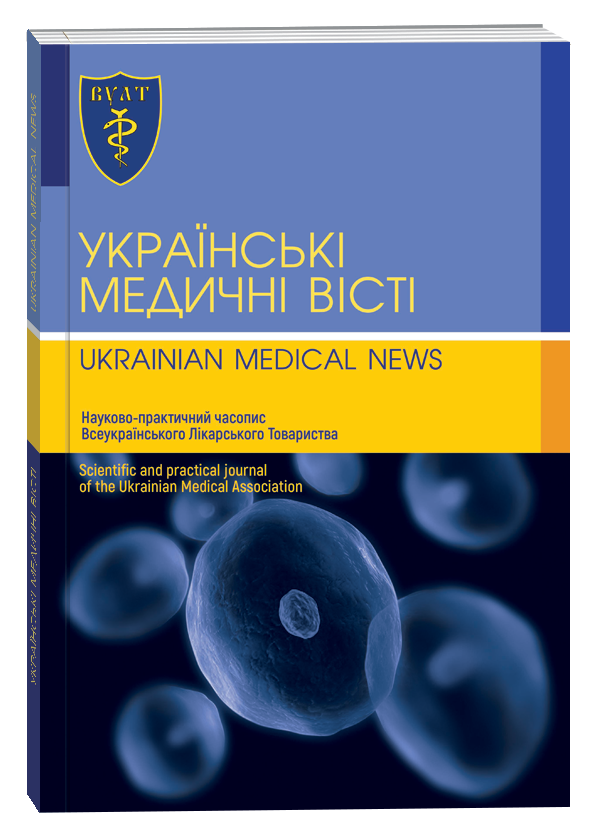DESCRIPTIVE AND CLINICAL ANATOMY, ITS CRITERIA IN DIAGNOSIS AND TREATMENT OF DISEASES
DOI:
https://doi.org/10.32471/umv.2709-6432.88.1799Keywords:
anatomy, theoretical medicine, education, practice, clinical thinking.Abstract
Anatomy — the science of shape, structure, origin and development of organs, systems and the body as a whole. Its importance for medicine, which deals with the body of a healthy and sick person, is difficult to overestimate. Knowledge of the structure of the human body — the basis of medical science and art. Anatomy is the basis of medical education, because accurate knowledge of the shape and structure of the living human body is a prerequisite for understanding the vital functions of a healthy and diseased human body, and therefore a clear idea of the causes of the disease. Accurate knowledge of the structure of the human body is necessary for a proper understanding of the diagnosis and treatment of diseases, ie to master the theory and practice of medicine, methods of examination, methods of conservative and surgical treatment. The study of patterns of development, structure and function of organs and systems is not only the basis for the study of clinical disciplines, but also contributes to the development of clinical thinking. Anatomy does not aim to study pathology, but deep theoretical training, along with the study of the structure and development of organs and structures of the human body in embryogenesis and postnatal ontogenesis, give anatomical facts a certain clinical direction. Thus, theoretical knowledge is the basis for creative mastery of clinical disciplines, they teach to analyze and correctly interpret pathological changes in organs and tissues, which is the key to knowledge of differential diagnosis — an important component of clinical thinking. Substantiated theoretical and practical significance of each topic creates a positive cognitive and professional motivation, which forms not only the skills and abilities, but also the personality of the doctor.
References
Дзевульська І.В., Ковальчук О.І., Маліков О.В. (2013) Клінічне направлення викладання анатомії людини. В кн.: Вітчизняна та світова медицина в умовах сучасності. Матеріали міжнар. конф., 18−19 січня 2013 р., Дніпропетровськ, с. 15−18.
Дзевульська І.В., Маліков О.В. (2017) Значення міждисциплінарної інтеграції при викладанні анатомії людини. В кн.: Актуальні дослідження медичних наукових досліджень в Україні та країнах ближнього зарубіжжя. Матеріали міжнар. конф., 6−7 жовтня 2017 р., Київ, с. 10−13.
Дзевульська І.В., Маліков О.В. (2019) Клінічне направлення при викладанні дисципліни «Анатомія людини». В кн.: Medical education as a component of the education system in Ukraine and eu countries. Матеріали міжнар. конф., March 25−April 5 2019 р., Wloclawek, с. 36−39.
Дзевульська І.В., Маліков О.В. (2021) Описовий та клінічний підходи до вивчення анатомії людини. В кн.: Особливості модернізації предмету досліджень представників медичних наук. Матеріали міжнар. конф., 4−5 червня 2021 р., Київ, с. 12−15.
Ковальчук О.І., Маліков О.В. (2012) Роль і місце ембріогенезу в курсі викладання анатомії людини. В кн.: Роль сучасної медицини у забезпеченні здоров’я суспільства. Матеріали міжнар. конф., 21−22 грудня 2012 р., Київ, с. 97−98.
Паливода Р.С., Воловар О.С. (2016) Забір анатомічного комплексу: виростковий відросток нижньої щелепи, скронево−нижньощелепний суглоб, скронева кістка. Український стоматологічний альманах, 3 (2): 11−14. ISSN 2409−0255.
Черкасов В.Г. (2020) Некоторые варианты строения и аномалии скелета туловища, их клиническое значение. Південноукраїнський медичний науковий журнал, 27: 46−50. ISSN 2306−7772.







